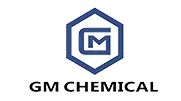Company News
How to Use Boric Acid Powder?
Nov. 07, 2020
 Article Directory:
Article Directory:
1. How to use boric acid powder
2. What are the application fields of boric acid
Three, what to do with boric acid poisoning
How to use boric acid powder?
How to use boric acid powder
It is recommended that the boric acid solution must be cold water, the towel should be thick, and the time should be at least 30 minutes. It takes 3-5 minutes to change towels frequently with the solution.
It is contraindicated to wash the affected area with hot water. The role of boric acid is to disinfect, sterilize and relieve itching. It is generally prepared at a concentration of 0.3%, that is, 3 grams of boric acid powder with 1000 ml of cold water, generally used Soak 6 layers of gauze and twist until no dripping, apply on the face for 20 minutes at a time, twice a day, you can use it repeatedly. Use it for one day at a time and remix it the next day.
What is the effect of applying boric acid solution on the face?
The boric acid solution is a colorless and clear solution with a weak acid reaction. 2 to 3% solution is used for washing and cleaning skin and mucous membranes (cavity wounds. When lye splashes into the eyes, rinse with clean water and then with boric acid solution.
Under normal circumstances, boric acid solution is a topical bactericide, disinfectant, astringent and preservative. It has inhibitory effect on a variety of bacteria and molds. The principle of action is that it can combine with amino groups in bacterial proteins to play a role. It can be used for washing and disinfecting skin, mucous membranes, wounds, oral cavity, vagina, bladder, etc. It can also be used for otitis, burns, scalds, eczema, etc.
What is boric acid
Boric acid is a white crystalline powder or colorless scales with a pearly luster. It is irritating and can be used as a chemical reagent and in the production of insecticides for cockroaches and beetles. It is also used as a hemostatic and preservative in medicine. White powdery crystals or scaly lustrous crystals on the triclinic axis surface, with a slippery feel and no odor. Dissolved in water, alcohol, glycerin, ethers and essential oils, the aqueous solution is weakly acidic. It is widely used in the glass (optical glass, acid-resistant glass, heat-resistant glass, glass fiber for insulating materials) industry, which can improve the heat resistance and transparency of glass products, increase the mechanical strength, and shorten the melting time.
What are the application fields of boric acid?
Flame retardant
The borate added to celluloid material can change its oxidation reaction and promote the formation of "carbonization". Therefore, it is flame retardant. Boric acid used alone or together with borax has a special effect on reducing the flammability of celluloid insulation materials, woodware, and cotton tyres in mattresses.
Glass and fiberglass
It is used to produce high-grade glass and glass fiber such as optical glass, acid-resistant glass, organic boron glass, etc. It can improve the heat resistance and transparency of the glass, increase the mechanical strength, and shorten the melting time. How to use boric acid powder
Enamel and ceramics
The enamel and ceramic industries are used in the production of glazes, which can reduce the thermal expansion of the glaze and lower the curing temperature of the glaze, thereby preventing cracking and deglazing, and improving the gloss and fastness of the product.
Pharmaceutical industry
Used in the production of boric acid ointments, disinfectants, astringents, preservatives, etc.
metallurgy
Used as an additive and co-solvent in the production of boron steel, so that boron steel has high hardness and good rolling ductility. Boric acid can prevent surface oxidation of metal welding, brazing and sleeve welding. It is also a raw material for ferro-boron.
leather
It is used for ashing off the surface of bare leather to prevent gray spots on the leather surface after retanning.
Anti-rust
Boric acid can be used as rust inhibitor, lubricant and thermal oxidation stabilizer. It is added to lubricants, brake fluids, metalworking fluids, water treatment agents and fuel additives.
What to do with boric acid poisoning?
When oral boric acid poisoning is taken, induce vomiting immediately and use 2% to 5% sodium bicarbonate solution (do not use borax poisoning), normal saline or lukewarm water and other gastric lavage. After gastric lavage, pour sodium sulfate into catharsis. The boric acid contaminated in other parts also needs to be washed with saline, water or soapy water. Intravenous infusion of dextrose saline and plasma is helpful for treating shock and accelerating the excretion of poisons. Or intravenous infusion of normal saline. If there is acidosis, apply appropriate amount of sodium lactate or sodium bicarbonate solution. After correcting dehydration and acidosis, continue to inject 5%-10% glucose and sodium-containing solution intravenously to maintain alkaline urine and facilitate the excretion of boric acid. Severe patients can consider therapies such as exchange blood, hemodialysis or peritoneal dialysis. Others are symptomatic treatment.
The treatment of borax poisoning is similar to that of boric acid, but no alkaline solution is used for gastric lavage. In addition to the application of sedatives for convulsions, 10% calcium gluconate 10-20ml can be used, and 20-40ml glucose solution is added for slow intravenous injection.
Previous: Succeed to devlop 1-Pyrenecarboxylic acid [19694-02-1] in our lab at kg scale.
Next: The Harm of Silane

 Article Directory:
Article Directory:




